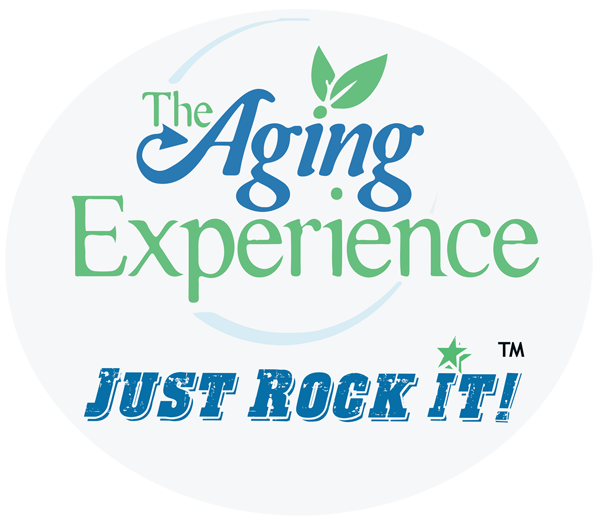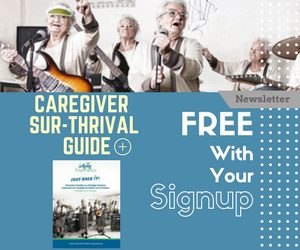Brilliant Disguise – Bruce, HB2 and LGBT Elders. Telling Your Health Provider Your Sexual Identity is Important!
Brilliant Disguise – Bruce, HB2 and LGBT Elders – Reprinted from my Huff Post 50 Blog
I recently attended a program sponsored by the Western Carolina Chapter of the Alzheimer’s Association entitled Conversations about LGBT Older Adults, Families, and Equality, Health, and Community Services.
Days earlier Bruce Springsteen canceled his Greensboro, NC concert in protest of HB2 and that day, the governor was backpedaling on the bill.
Needless to say this program took on added significance against the backdrop.
So imagine, it’s tough enough being LGBTQ (the Q is for questioning I Iearned) but now imagine being an LGBT elder. See we tend to freeze certain segments of the population at a point in time. Just because they grow older didn’t mean they grew straight! No, now we have older people with all of the travails of growing old layered with being out of the mainstream.
- 3 million people in the U.S. 55 and older identify as LGBT.
- 50% of single LGBT older people believe they will have to work well beyond retirement age compared to 27% of non-LGBT people.
- 40% of LGBT elders say their support networks have become smaller over time, as compared to 27% of non-LGBT people.
- 1 in 3 LGBT elders live alone compared to 27% of non-LGBT people.
- 25% of transgender older adults reports discrimination when seeking housing.
- 40% of LGBT older people age 60-75 say their healthcare providers don’t know their sexual orientations.
So let’s take that last point – healthcare. There are already access issues to care. What can we do to create inclusive healthcare environments for LGBT people? According to the National LGBT Health Education Center, there are ten things in fact we can do.
- The board and senior management are actively engaged.
- Policies reflect the needs of LGBT people.
- Outreach and engagement efforts include LGBT people in your community.
- All staff receive training on culturally-affirming care for LGBT people.
- Processes and forms reflect the diversity of LGBT people and their relationships.
- Data is collected on the sexual orientation and gender identity of patients.
- All patients receive routine sexual health histories.
- Clinical care and services incorporate LGBT health care needs.
- The physical environment welcomes and includes LGBT people.
- LGBT staff are recruited and retained.
Coming Out to Your Provider
The National LGBT Health Education Center also publishes a pamphlet on coming out to your provider. There are particular health risks associated with this population – higher smoking rates, increased risk of suicide, increased risk of sexually transmitted diseases. When you come out, a provider can truly tailor a person-centered approach to care and refer you to the right specialists like behavioral health providers.
But not every provider may be equal in their acceptance.
The Other Side of the Coin
In November of 2014, LGBT HealthLink, Missouri’s PROMO, and lawyer Corey Prachniak released the first ever LGBT Healthcare Bill of Rights (HBOR). The bill, in both long form and wallet sized versions, outlines the protections and rights LGBT people have in healthcare today.
The Gay and Lesbian Medical Association publishes a directory of health professionals advancing LGBT equality. Start there to find a provider.
The Human Rights Campaign Healthcare Equality Index showcases providers who meet their Core Four.
Patient Non-Discrimination
a. Patient non-discrimination policy (or patients’ bill of rights) includes the term “sexual orientation” and the term “gender identity”
b. LGBT-inclusive patient non-discrimination policy is communicated to patients in at least two documented ways AND is communicated to staff
Equal Visitation
a. Visitation policy explicitly grants equal visitation to LGBT patients and their visitors
b. Equal visitation policy is communicated to patients in at least two documented ways AND is communicated to staff
Employment Non-Discrimination
a. Employment non-discrimination policy (or equal employment opportunity policy) includes the term “sexual orientation” and the term “gender identity”
b. Employment non-discrimination policy is communicated to the public in at least one documented way
Training in LGBT Patient-Centered Care
a. Staff receive training in LGBT patient-centered care (HRC offers free, expert online training to staff at all levels)
b. All staff involved in patient care services must be informed of the free LGBT training opportunities available through the HEI
I was not surprised at all that one of our local health systems was identified as a leader in LGBT rights. As a patient of the organization, a family caregiver to a mom who receives care there, and as a consultant who has worked for them, the culture permeates person-centered. See there are a lot of providers talking the talk of person-centered health care experience and few walking it.
Educate yourself on who advocates in your court. And beware of those who have in Bruce’s words “A Brilliant Disguise.”
So tell me who I see
When I look in your eyes
Is that you baby
Or just a brilliant disguise
And check out Huff Post’s LGBT Wellness Page to keep on top of these issues.
Hiring a Caregiver – 10 Questions to Ask
Hiring the right caregiver means asking the right questions.
A Reputable Home Care Agency Should Be Able to Answer These Questions When Hiring a Caregiver
There are many scenarios in life when you may need to hire a professional caregiver. Ask the questions in my article.
Use Analytics to Predict Your Place to Age

Carol Marak
Senior City Guides Can Help – by Carol Marak, Senior Care.com
Affordability ranks number one for retiring singles and couples. Even in the Elder Orphan Facebook group, hundreds of individuals over 50 years and over seek a place that’s safe, connected, and affordable. Many in the group are in the same predicament. We enjoy solo living, yet feel the pressures of disconnection and loneliness at times.
But it’s the ability to pay for a home and an enjoyable lifestyle that accentuates the discomfort. We want what we cannot afford, and many members ask, “Why is housing so costly?” It’s a fact; housing cost is the largest expense in household budgets across the board. Medical expense runs second, especially for seniors.
However, alongside affordability, boomers like those in the Facebook group, want to continue working in retirement, so they seek dynamic local economies, an adequate housing stock and a lower cost of living. And since 92% of older adults have at least one chronic disease, and 77% have at two, making accessibility, the proximity to stores, services, social events, and transportation is priority.
For individuals of all ages, especially those over 65 years old, planning a life with less income, requires a place with lower costs and appealing lifestyle features–such as moderate climates, abundant cultural and life-long learning opportunities, lower health and long-term care expenses, and substantial activities.
By using the senior city guides and the data collected, individuals can do a thorough investigation of areas in the United States and then decide if a place is a good one to retire in or not.
Fundamental Statistics of a City and State
When reviewing the vital stats of the aging population by location, one discovers significant information:
- The proportion of the older adults 65 and over
- The number of that segment living alone
- The annual income
- The number of individuals on food stamps
- The average Social Security Income
- The median household income
- The health rankings
- The number of those still working
- The number of veterans
Why it’s important
Let me explain the significance of the data. For example, I’m part of the 65+ population, and I fully understand my capabilities and know my desires of a healthy lifestyle. So, living in a location that promotes well-being and access to a comfortable routine is paramount. I’ll break each data point and explain how each relates to me. Hopefully, you will be able to interpret the guides to be a tool for direction.
The proportion of older adults – since I know the importance of connection and relationships, if I live in an area that has residents my age, I have a better chance finding companionship. Plus, it makes sense that services and activities will be available for us to enjoy.
The number living alone – I live alone and have a better chance finding my tribe in a location where the proportion of single people ranks highest.
Annual income – this factor affects what things and activities people can have and do. For me, I don’t want to live in a community where my peers either make a lot more or a lot less than me.
Health rankings – if a location ranks high in this aspect, I’ll have a better chance finding others who prefer an active lifestyle.
Working adults – continuing to work and having a purpose inspires me. So, if other people my age continue to work, chances are each will contribute to making a difference to society as a whole.
The article is a brief assessment of how I interpret the guides. Of course, I did not include other significant data like long-term care choices, and the costs of housing. The city guides offers that and more in one place for convenience. It’s difficult to research the demographics of a locations, let alone all the other stats the guides offer. Try it out and learn in-depth stats and data about the state and local area you’re living.
Custom Ipod Playlists Make Seniors Come Alive Inside

The video Alive Inside popularized the idea of custom ipod playlists for seniors.
Viral Video Alive Inside Started Activities Revolution
Music and Memory is improving the quality of life of the elderly through iPod based personalized music. Learn more.
Frauds and Schemes Targeting Older Folks – Five Things to Know
Senior scams are called the crime of the 21st Century.
Frauds and Schemes Called Crime of 21st Century
Frauds and Schemes target the older group because it’s believed that they have a significant amount of disposable income, savings, and other resources. Here are 5 fraud categories that older adults must know. Read the article.










